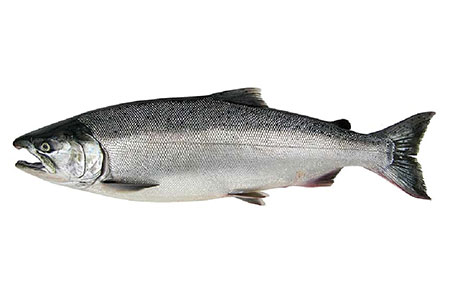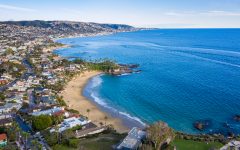
Ringside: Salmon Restoration Must Address Bass Predators
Between 2000 and 2021, the farmers got a 100 percent allocation only once, in 2006
By Edward Ring, June 20, 2024 2:45 am

As reported in the Fresno Bee earlier this week, “More than 20,000 San Joaquin Valley residents could be left high and dry, literally, by Sacramento politicians intent on using $17.5 million that had paid for water trucked to their homes to help fill California’s gaping two-year $56 billion deficit.”
 To begin with, there shouldn’t be a deficit. California’s general fund budget in 2013 was $96.3 billion, and by 2023 it expanded to $226.0 billion. Even adjusting for population growth and inflation, per-capita state spending increased 79 percent in one decade. That’s a topic for another time, but surely there’s room to cut spending without depriving rural households of their sole source of water.
To begin with, there shouldn’t be a deficit. California’s general fund budget in 2013 was $96.3 billion, and by 2023 it expanded to $226.0 billion. Even adjusting for population growth and inflation, per-capita state spending increased 79 percent in one decade. That’s a topic for another time, but surely there’s room to cut spending without depriving rural households of their sole source of water.
More to the point, trucking water to homes should never have been necessary. These households relied upon wells that dried up because the State of California engineered a perfect storm of scarcity. Between 1967 and 2000, there were only 6 years when the State Water Project didn’t allocate 100 percent of the water they had contracted with farmers to deliver. But between 2000 and 2021, the farmers got a 100 percent allocation only once, in 2006.
Unable to get enough water from the state aqueducts, farmers pumped more up out of the ground, and with limited water supplies, they abandoned flood irrigation which would have replenished the aquifers. To cope with aquifer depletion, the state now rations groundwater pumping. Meanwhile, farmers go bankrupt and 20,000 San Joaquin Valley residents rely on water delivered on trucks.
Water allocations were cut to save salmon and other threatened species of fish. It hasn’t worked, and will never work, until it accounts for a key variable: predation.
It’s always tempting to oversimplify policy issues, especially when a simple shift in policy based on a simplified assessment of reality will completely change the fate of an industry. But what is undeniably simple is the fact that salmon are prey for virtually every species of bass.
Saving salmon relies on what are referred to as the “Four H’s,” hydrology, hatchery, habitat and harvest. The first three have been public policy priorities. Since the State Water Project was largely completed in 1967, California’s rivers have never had such a high a percentage of unimpaired flows combined with timed releases for the fish. California’s six salmon hatcheries release 30 million salmon smolts every year. And the tide has long turned in the battle to restore and improve habitat faster than it is degraded by development. But salmon populations continue to decline.
Developing hatchery practices that will reduce the potential for inbreeding and develop hardier smolts is a good idea, as is setting aside reasonable allocations of land for habitat restoration. But requiring millions of acre feet of storm runoff to pour into the oceans, year after year, is taking huge portions of California agriculture out of production and condemning a huge percentage of California’s 13.3 million households to short showers and nonfunctional “xeriscape” heat islands. But there is little evidence, if any, that salmon are rebounding with all that water.
“Harvest” refers to how many salmon are harvested each year. It doesn’t matter if you improve habitat, breed millions of salmon, blast millions of acre feet into the ocean every year, if the fish are being harvested faster than they’re able to reproduce. But California’s only active harvest strategy is to shut down the commercial salmon fishing industry. It’s not enough, and it ends up pitting salmon fishing interests against the interests of farmers and urban water users.
The problem – and please excuse the lack of nuance because years of official inattention justify a bit of hyperbole – is that bass are “harvesting” salmon each year by the tens of millions, and increasing flow and improving habitat appears to be helping bass populations more than it helps salmon populations.
An ongoing study conducted over several years measured the percentage of nonnative fish populations and found that in 2002, they already represented 82 percent of all fish in the Sacramento-San Joaquin Delta. By 2022, that percentage had increased to 98 percent.
This is an astonishing shift, backed up by compelling anecdotal evidence. Sport fishermen who have spent years on these rivers all tell the same story: the bass not only eat salmon as soon as they’re released, they anticipate the releases. The bass congregate in the shallows just downstream from the hatcheries and as soon as the smolts are in the water, they’re a meal.
There are habitat restoration and habitat management projects that can help protect salmon from bass. For example, locating smelt hatcheries next to nurseries in managed wetlands that exclude nonnative Mississippi Silverside predators may help that species rebound. Similarly, instead of trucking salmon smolts from the hatchery all the way to the San Francisco Bay (which disorients them on their return to spawn), why not move them into nearby exclusionary wetlands where they can grow much larger before being released downstream?
But more is needed. If the state can completely shut down commercial salmon fishing for two years in a row, they can also remove the limits on bass fishing. That’s what the State of Oregon did in 2016, when they removed limits on bass fishing for consumption, and again in 2023 when they removed limits on bass fishing for any purpose, including solely to reduce their population.
How much of an impact Oregon’s decisions may have depends on who you ask, and in any case it’s too soon to tell. But as it is, salmon in California are not rebounding. If the state is willing to deal body blows to the commercial salmon industry, jeopardize the entire agricultural economy in the San Joaquin Valley, ration all urban water use at an almost intolerable cost, and deprive thousands of valley residents of reliable access to drinking water, they can emulate Oregon.
Hydrology, habitat, and hatchery strategies are not enough. The California Dept. of Fish and Game is trying to design an environment where bass and salmon can both thrive. It’s a ridiculously improbable objective. The collateral damage of this flawed policy far outweighs the benefits of what is a highly improbable success.
We’ve tried everything else. Remove all limits on bass fishing. Or just admit the bass won. Either way, restore water deliveries.
- Ringside: Salmon Restoration Must Address Bass Predators - June 20, 2024
- Ringside: Can an Abundance Agenda Unite Business? - June 13, 2024
- Ringside: The Death and Resurrection of CAGOP - June 11, 2024





I’ve been saying this for years. Stripped bass are not native to California. Up the bag limit and reduce the size would be a good start.
Yes, Garlicdude. You and a lot of others have been saying this. They don’t listen. It will take a boycott of some kind to get their attention – like refusing to buy their over priced fishing license…which is practically useless anyway since the CADFW has cancelled the salmon season for the past two years….and next year?
I was fishing with a guide up in the northern Sacramento River. We caught ~ 35 Striped Bass. Six were legal @ ~ 18 x 20 inches, the rest were ~ 15 – 17 3/4 and thrown back to gobble up more salmon fry and get legal sized.
Then we have the sea lions…
The state treats us citizens like they do the salmon.
And the state CADFW is still throwing good money after bad. Refuse to have any common sense. They have now started releasing the smolt in Santa Cruz harbor instead of in the Sacramento River. So, not only will the striped bass be happy….so will the gulls, pelicans, sea lions and every other predator. As Ms. Katy Grimes says, “Welcome to Crazifornia!”
…or did she say, “They don’t call it Crazifornia for nothing!”?
Since the turn of the century, the best salmon rebounds have been after commercial closures. Alaska is also having salmon population issues and their rivers are pristine, indicating the problem is mainly in the ocean. Overfishing! Salmon, striped bass and large mouthed and squawfish have co-existed since the 1800’s. Habitat destruction is a factor in the population decline without a doubt along with the predation by the two non-natives. All factors need to be addressed: better oversight on commercial take on the entire west coast, improving habitat and reducing predatory pressure. The later can be accomplished the easiest by removing size and take limits. Do we really need to preserve a non-native species? If deemed valuable enough for recreational purposes and the population crashes, they could always be re-introduced.
I am not well traveled, yet have seen enough rivers and signs in more than a dozen states that talk about coyotes, invasive plants and of course fish and reptiles that somehow were introduced to an area and is now out of control, as if it ever could be controlled.
Florida, Wyoming, and many other states have this problems, and after watching the myriad “law Enforcement Shows” in almost every state, the local hunter/fisher/commercial trawler, etc have no regard for Rules and Regulations..
So what is the answer? The States sure don’t budget enough to watch it all, and “raising awareness” is laughable, IMO
Just as my desire to dredge for gold in the rivers and creeks as a recreational hobby, they have denied that for more than a decade, whose anecdotal evidence from divers was the fish that curiously watched them under the water, and loved the disturbance of the sediment on the bottom.